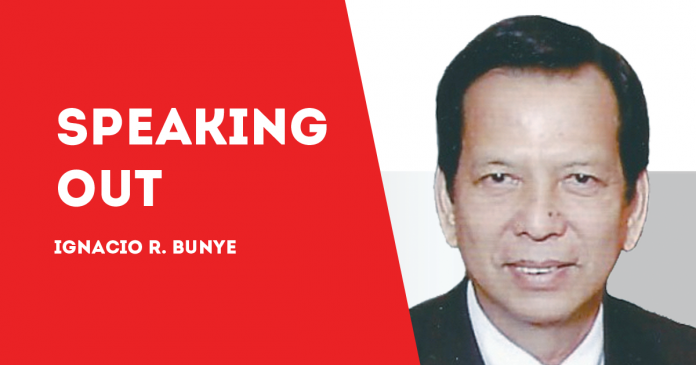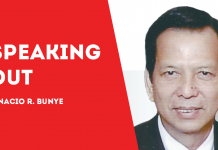
I RECENTLY attended a virtual lecture by my favorite historian, Professor Ambeth Ocampo, where he expounded on various epidemics that visited the Philippines more than 100 years ago. The lecture was part of a long-running series “History Comes Alive”, now on its 10th year, which is sponsored by the Filipinas Heritage Library and the Ayala Museum (my favorite museum). According to Ocampo, at various periods, the Philippines was hit by smallpox, bubonic plague, and cholera and it was interesting how the authorities dealt with them.
In the 1800s, the “flavor of the month” was smallpox which infected most of the Spanish territories, in South America and the Philippines. The then reigning Spanish monarch, Carlos IV, ordered a vaccination expedition to head for the territories in 1803. The group was headed by Francisco Javier de Balmis.
In the late 1700s, Spain already had a vaccine for smallpox and in fact Carlos IV had his immediate family inoculated. But the problem was how to transport the vaccine because of the long voyage involved. Balmis had the brilliant idea of using live carriers. From Spain to Mexico and from Mexico to Manila, Balmis used orphans working a relay system. During the voyage, Balmis transmitted the vaccine in sequence, from child to child, arm to arm along the way to their destination.
To cut a long story short, Balmis and his boys eventually reached Manila in 1805. The Spanish Governor-General Rafael Aguilar led the way by having his children inoculated. This softened the initial resistance of the Archbishop of Manila who was not keen on vaccination. Eventually, Balmis inoculated 20,000 inhabitants in Manila and environs. Balmis’ assistants later proceeded to Misamis and Zamboanga. From Manila, Balmis brought Filipino orphans to Macau and Canton for a similar inoculation exercise.
A bronze monument of Carlos IV, in front of the Manila Cathedral in Intramuros, and a historical marker at the Research Institute of Tropical Medicine commemorate the vaccination expedition.
During the American occupation, we were hit by bubonic plague (1899, 1905, and 1912) and cholera (1902). Bubonic plague is widely believed to be carried by rats. Rats usually came via ships so the authorities built along the shore area smooth concrete walls to prevent rats from climbing over. The authorities also ordered a wide-spread drive to eliminate rodents. As an incentive, sanitation officials paid five centavos for every rat tail. More enterprising Filipinos resorted to breeding rats to increase their income. Others sold live pythons, to the more adventurous, as a substitute for cats to kill rats inside dwellings.
During the cholera outbreak, people became very afraid of ambulances. Medical personnel would get infected persons from their homes and, for many, that was the last time they would see their sick relatives. So the people started hiding their sick relatives from the sanitation officials.
Ocampo also brought out a little known fact about how American occupation troops at the turn of the century used cholera as an excuse to contain the Philippine rebellion. The Americans hamletted “cholera-infected” villages and burned houses and crops. In 1902, the Americans ordered the burning of a whole district called Farola (in Tondo). Ocampo wondered whether it was really the disease or were the Americans only trying to ferret out the Filipino freedom fighters?
Incidentally, the most famous victim of cholera was Apolinario Mabini who got infected by drinking unsterilized carabao’s milk.
Donald Trump and COVID 19
Donald Trump behaves as if he is invincible to COVID-19. Even after testing positive, he temporarily slipped out of the hospital where he was supposed to be isolated, to greet placard-waving supporters. Two days later, he returned to the White House even as COVID cases rose among the presidential staff. In a show of defiance or misplaced bravado, Trump removed his face mask in front of cameras.
Let’s hope history does not repeat itself. In 1841, another macho US president met an unfortunate end by refusing to take basic health precautions. William Henry Harrison was a highly decorated soldier who distinguished himself in the Indian Wars and in the War of 1812. (Of course, Trump was not a decorated soldier. He even dodged the draft.) Harrison eventually was elected as the ninth president of the US. It was bitterly cold during his inauguration day but the macho man ignored the advice to put on a hat and a topcoat. Harrison delivered a long-winded speech which lasted one hour 45 minutes. By evening, Harrison developed a cold. Again, Harrison downplayed the supposedly minor ailment. A few days later, he had pneumonia. Thirty-two days after his inaugural speech, Harrison was dead!
***
Note: You may wish to share the foregoing article via Facebook, Twitter and/or Linked-In./PN

